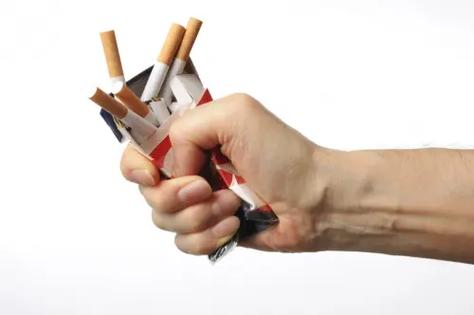If you or a loved one are facing the prospect of hearing reconstruction surgery for a condition known as adhesive otitis media, you are likely navigating a mix of hope and anxiety. This procedure, which aims to restore hearing by rebuilding the delicate sound-conducting mechanism of the middle ear, is a remarkable feat of modern medicine. However, a significant and often overlooked factor can dramatically alter the surgical landscape: tobacco use. Whether through smoking or exposure to secondhand smoke, tobacco introduces a cascade of challenges that can complicate every single step of the journey, from pre-operative preparation to long-term healing. Understanding this connection is not about assigning blame, but about empowering you with the knowledge to actively improve your surgical outcome and reclaim the sounds of your life.
Adhesive otitis media is not your typical ear infection. Instead of fluid, it's characterized by the formation of scar tissue and adhesions that literally glue the tiny ossicles—the hammer, anvil, and stirrup—together or to the middle ear walls. This immobilizes them, preventing the efficient transmission of sound vibrations and leading to progressive, conductive hearing loss. The primary goal of tympanoplasty, the surgical repair, is to meticulously dissect this scar tissue and reconstruct the ossicular chain, often using prosthetic implants. Success hinges on creating a stable, well-aerated, and healthy middle ear space. This is precisely where tobacco use wages a silent war.
The negative effects begin long before the first incision is made. Tobacco smoke contains thousands of chemicals, including nicotine, carbon monoxide, and hydrogen cyanide, which collectively wreak havoc on the body's microcirculation. In the context of ear surgery, this means the tiny blood vessels that supply the eardrum and the lining of the middle ear become constricted and damaged. The tissues, already compromised by the chronic inflammation of adhesive otitis media, are deprived of optimal oxygen and nutrients. For a surgeon, this translates into operating on tissues that are more friable, less resilient, and inherently unhealthy. This poor tissue quality can make the initial elevation of the eardrum flap, a fundamental step in accessing the middle ear, more technically challenging and prone to tearing.
Perhaps the most critical battleground is the Eustachian tube. This small tube connecting the middle ear to the back of the throat is the ear's ventilation system, crucial for maintaining equal air pressure. A properly functioning Eustachian tube is the single most important predictor of success in hearing reconstruction surgery. Tobacco smoke is a potent irritant that causes swelling and inflammation of the Eustachian tube lining, leading to its dysfunction. In a patient who uses tobacco, the Eustachian tube is often already failing, contributing to the original development of adhesive otitis media. Proceeding with surgery without addressing this is like building a beautiful house on a foundation that is actively sinking. The reconstructed middle ear will struggle to maintain aeration, creating an environment ripe for failure.
When the surgery itself is underway, the challenges posed by tobacco become starkly evident to the surgical team. The chronic inflammatory state induced by smoking often leads to increased and more tenacious scar tissue. Dissecting these adhesions becomes a painstaking and delicate task, with a higher risk of causing unintended damage to nearby structures, such as the facial nerve, which runs through the middle ear. Furthermore, the operative field may exhibit increased oozing of blood. Nicotine's effects on platelet function and blood vessels can lead to a less dry surgical field, obscuring the surgeon's view and potentially complicating the precise placement of prosthetic bones.
The real test, however, begins after the surgery. The post-operative period is when the body's healing capabilities are put to the ultimate test, and this is where tobacco's effects are most devastating. Wound healing is a complex, orchestrated process that requires robust blood flow, a healthy immune response, and the efficient production of new cells. Tobacco smoke directly impairs every one of these stages.
Nicotine, as a potent vasoconstrictor, continues to choke off the blood supply to the newly reconstructed area. The graft used to repair the eardrum and the tissues around the prosthetic implant are left fighting for survival in an oxygen-deprived environment. This significantly increases the risk of graft failure, where the new eardrum tissue does not take hold and instead breaks down, leading to a persistent hole or perforation.
Simultaneously, the toxic chemicals in smoke paralyze the immune system's first responders—the white blood cells. This dramatically raises the susceptibility to post-operative infections. An infection in a freshly operated middle ear can be a catastrophic setback, potentially leading to the expulsion of the prosthetic implant, destruction of the newly healed structures, and a complete loss of the hearing that was so carefully restored. The risk of post-operative infection is substantially higher in patients who smoke compared to non-smokers.
Even if the initial healing seems to proceed without major incident, the long-term viability of the surgery is threatened by the persistent dysfunction of the Eustachian tube. The reconstructed middle ear space needs to remain air-filled to function properly. In a patient who continues to use tobacco, the chronic swelling of the Eustachian tube prevents adequate ventilation. This can lead to the accumulation of fluid, the recurrence of negative pressure, and ultimately, the reformation of scar tissue and adhesions. In essence, the very process that caused the original adhesive otitis media is given the perfect conditions to return, undoing all the hard work of the surgery and the patient. This high rate of disease recurrence is one of the most frustrating outcomes for both patients and surgeons.
Facing this information can feel daunting, but it is fundamentally a story of empowerment. The human body possesses a remarkable ability to heal and recover, especially when given the right support. The most impactful step you can take to maximize your chances of a successful hearing reconstruction surgery is to stop using all tobacco products. The benefits of cessation begin almost immediately.
Within just 24 to 48 hours of your last cigarette, nerve endings begin to regenerate and your sense of smell and taste start to improve. More importantly for surgery, carbon monoxide levels in your blood normalize, allowing for better oxygen delivery to tissues. Within two weeks to three months, your circulation improves, and your lung function increases. Eustachian tube function can also begin to recover as inflammation subsides. While optimal healing capacity may take several months to return fully, even a period of abstinence before surgery can make a profound difference.
Surgeons typically recommend a minimum of four to six weeks of complete tobacco cessation before elective surgery like a tympanoplasty. However, a longer period is even more beneficial. This pre-operative quit window allows the acute inflammation to settle and gives the cilia in your Eustachian tube a chance to recover, improving middle ear aeration from the start. Continuing cessation after surgery is equally, if not more, critical. It protects the fragile graft, supports the immune system in warding off infection, and gives the Eustachian tube its best possible chance at long-term function, thereby safeguarding your hearing investment for years to come.

Quitting tobacco is a challenge, but you do not have to do it alone. Be open and honest with your otologist about your habits. They are not there to judge you, but to help you. They can connect you with valuable resources such as smoking cessation programs, counseling services, and medical aids like nicotine replacement therapy or prescription medications that can manage withdrawal symptoms and double your chances of quitting successfully. Involving your family for support can also create a positive environment for change.
The decision to undergo hearing reconstruction surgery is a significant step toward improving your quality of life. By understanding the profound impact tobacco has on the procedure's difficulty and success rate, you are equipped with a powerful piece of the puzzle. Viewing tobacco cessation not as an optional recommendation, but as an integral part of your surgical treatment plan, is the key to tilting the odds dramatically in your favor. It is the single greatest contribution you can make to ensure that the door to the world of sound, once reopened, stays open for a lifetime.











